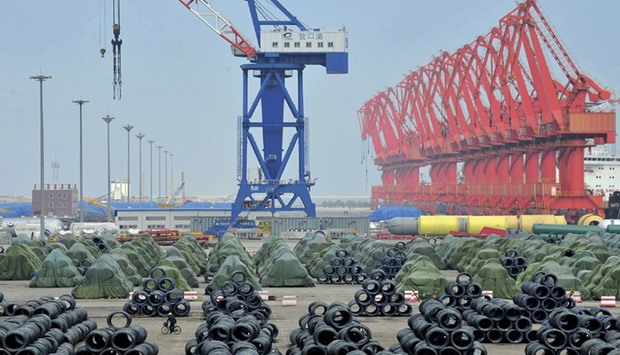China’s January exports may have fallen for a seventh month with factories still battling falling prices, but an expected jump in bank lending may underscore the government’s bid to put a floor under the slowing economy.
A raft of economic data due in the next two weeks will be closely scrutinised for any signs the slowdown in the world’s second-largest economy may have reached a bottom.
Exports are expected to have declined 1.9% in January from a year earlier, after slipping 1.4% in December, while imports likely dropped only 0.8%, following a 7.6% slide in November, a Reuters poll showed.
That may produce a trade surplus of $58.85bn for January, compared with a $60.09bn surplus in December.
China’s vast manufacturing activity contracted at its fastest pace in almost three-and-a-half years in January, an official survey showed.
Any improvement in imports, however, could be due to factories stocking up on crude oil and other raw materials amid falling global commodity prices rather than on stronger demand.
“Real activity in the start of 2016 has likely stayed weak, which may have been distorted partly by an earlier timing of Chinese New Year than in 2015,” Tao Wang, an economist at UBS in Hong Kong wrote in a note.
Underscoring mounting deflationary pressures, producer prices are forecast to have posted a 47th consecutive month of declines in January – down 5.4%, following a 5.9% slump in December, the poll of 29 economists showed.
Consumer price inflation may have picked up to 1.9% in January, a 5-month high, from December’s 1.6%, according to economists polled. Data out of China during January and February is typically skewed by the impact of the week-long Lunar New Year holiday, making it hard to assess the trends.
To smooth out seasonal distortions, the government will only report combined January and February growth figures for factory output, investment and retail sales in March.
New yuan loans are forecast to have surged to a nearly seven-year high of 1.8tn yuan ($273.9bn) in January, the poll showed, up from 597.8bn yuan in December.
China’s central bank said in mid-January that it would inject over 600bn yuan ($91.36bn) to help ease a liquidity squeeze expected before the Lunar New Year in early February.
Growth in the broad M2 money supply measure is predicted to have risen 13.4% in January from a year earlier, compared with December’s 13.3%. China’s economy grew 6.9% in 2015, the weakest pace of growth in a quarter of a century. Some analysts believe that real growth is even lower, and they expect momentum to slow further this year.

Steel coils are seen for export at a port in Yingkou, Liaoning province. China’s exports are expected to have declined 1.9% in January from a year earlier, after slipping 1.4% in December, a Reuters poll showed yesterday.
